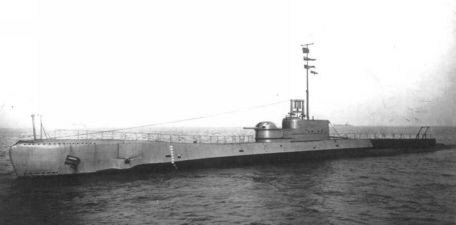HMS Thames (N71) History
HMS Thames led the emergence of the new Thames-class (also known as "River-class") attack submarines for the Royal Navy in the early 1930s. Originally planned for a class of 20, the requirement was to be pushed to just three ships - HMS Thames, HMS Severn and HMS Clyde. The model was originally designed for long-range patrols and surface fleet operations on the high seas, so speed became an important design quality. The Thames was laid at Barrow-in-Furness by Vickers-Armstrong and launched on 26 February 1932.
The third ship arrived in 1934 and the course was over.
The Thames uses a conventional diesel-electric propulsion system with two Admiralty designed diesel engines rated up to 10,000 hp. Together with 2 electric motors, the output is 2,500 horsepower. Diesel engines propel the boat during surface operations, while electrical systems control underwater operations.
Like other ships of the time, the Thames had to surface to recharge her batteries, get a new supply of oxygen and emit dangerous carbon dioxide gas. In fact, they spent most of their running careers on the surface, where their speed and stamina increased significantly compared to underwater work (in stark contrast to today's submarine capabilities).
To meet speed requirements, HMS Thames were equipped with lighter diesel engines, smaller caliber deck guns and a special lighter diesel fuel. This helped to encourage increased speed of operations - a key component of keeping up with the UK's surface fleet - although eventually the need for the surface fleet was reduced to the point where the Thames became primarily a long-range patrol vessel tasked with hunting down enemy ships. delegate.
The speed of the British surface fleet had grown to surpass the capabilities of any submarine at the time.
When completed, the Thames will have a length of 345 feet, a beam of 28.2 feet, and a draft of 15.10 feet. As it turns out, she's wider and about 6 feet shorter than the previous K-Class. The surface displacement is 2,165 tons and the underwater displacement is 2,680 tons. Her profile is traditional, with midsails, a well-contoured bow and a stern containing double helix and rudder controls.
Performance specifications include a surface speed of 22 knots and a subsea speed of 10 knots. Her total gun count was 61, and her armament consisted of 6 x 21" (533 mm) torpedo tubes in the forward position (with 12 x reloads) and a 4" deck gun Mk XII.
The design did not include rear-mounted torpedo tubesa feature found on many wartime submarines.
In 1939, HMS Thames was operating in British mainland waters. In September, as Germany invaded Poland and World War broke out in Europe, the Thames operated as part of the 2nd U-boat fleet. During her main operation, she conducted various patrols in search of German targets - mainly fighter jets and enemy submarines - which brought her to the waters off Norway as Germany fought in the Norwegian campaign of April-June 1940 During an attempt to conquer the Scandinavian countries. In July, she managed to sink the German torpedo boat Luchs, although her combat career was rather brief. It is believed that later that year, the Thames struck a mine while fighting the 9th U-boat fleet, and was wiped out sometime in July or August 1940.
This ended HMS Thames' career.
HMS Thames (N71) Specification
Basic
Roles
- Blue Water Operations
- Fleet Support
- Hunter
- direct attack
Dimensions
345 feet (105.16 m)
28.2 ft (8.60 m)
15.1 ft (4.60 m)
Weight
2,165 tons
2,680 tons
Performance
Performance
22 kn (25 mph)
10 kts (11. 51 miles)
6,952 nm (8,000 miles; 12,875 km)
ARMAMENT
6 x 21" (533mm) torpedo tubes (bow-facing) (12 x torpedo reloads).
1 x 4" Mk XII deck gun
AIR WING
None.





